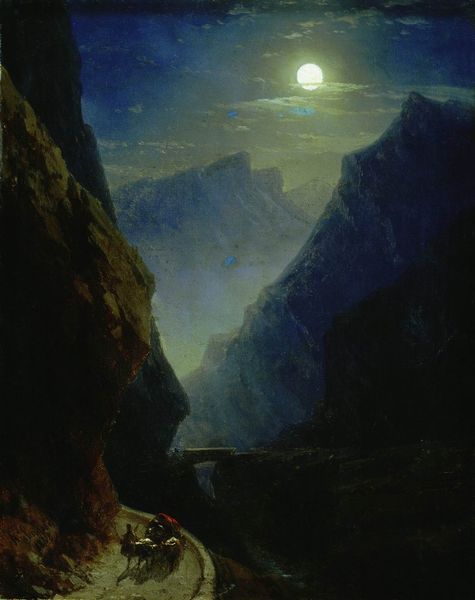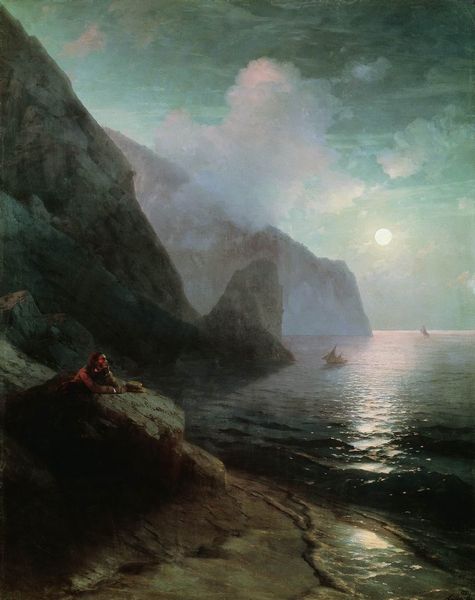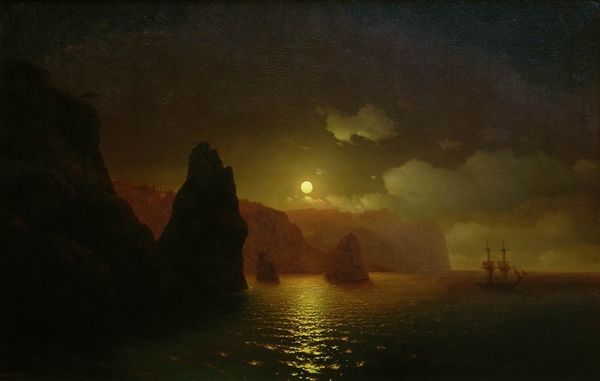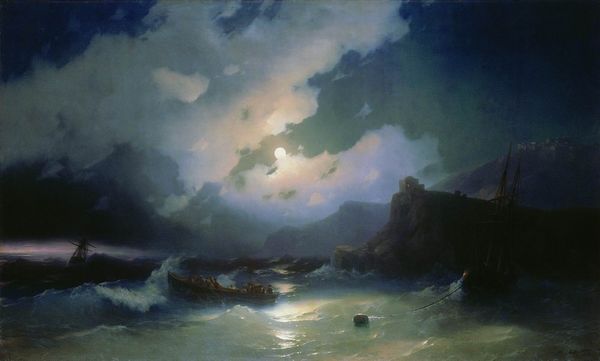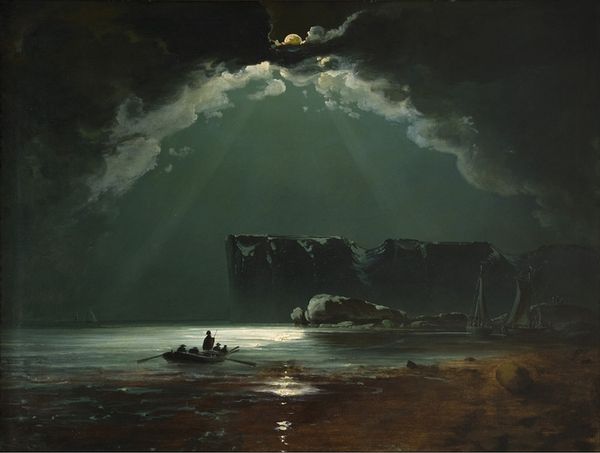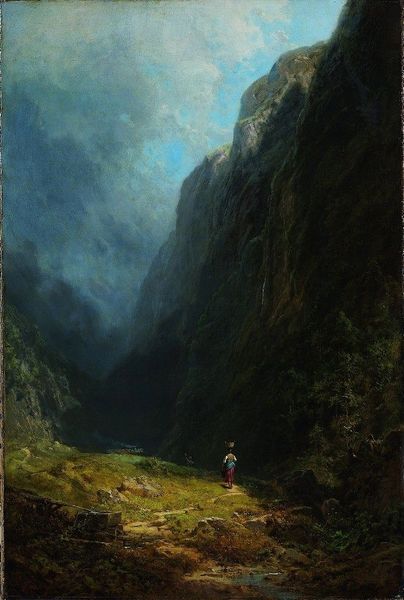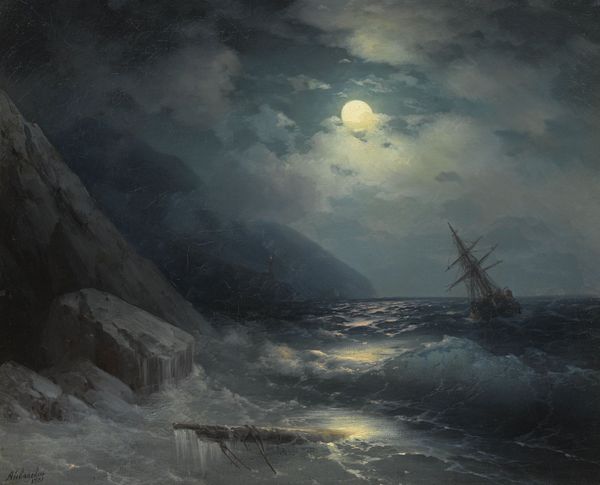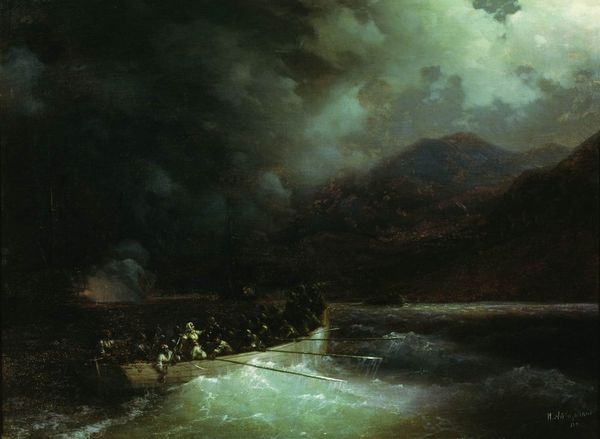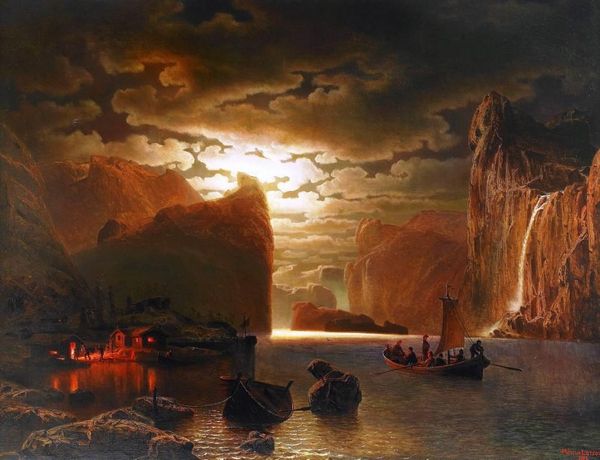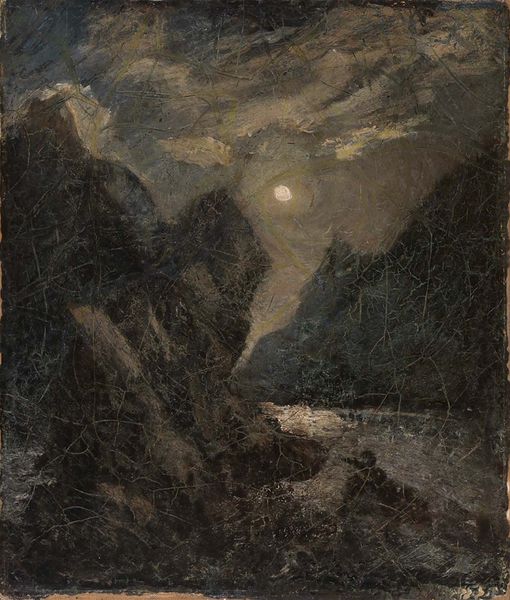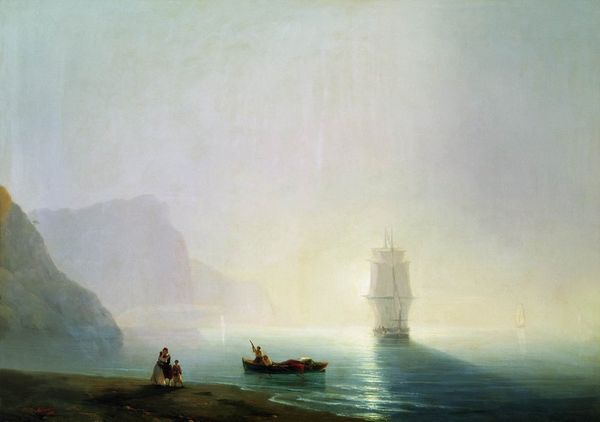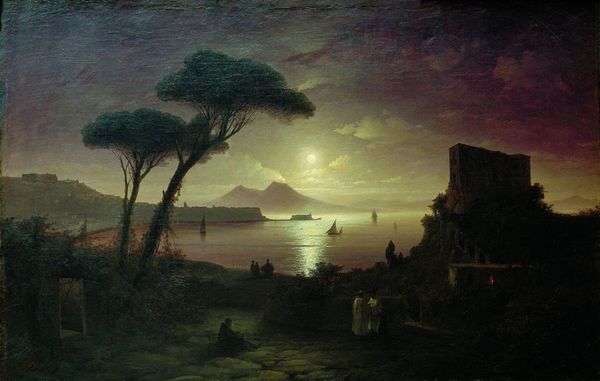
Copyright: Public domain
Editor: So, this is Ivan Aivazovsky’s “Darial Gorge,” painted in 1862. The scale of the landscape is just breathtaking, almost overwhelming. What do you see in this piece? Curator: I see a canvas ripe with the anxieties of its time. Aivazovsky, celebrated for his seascapes, here presents a landlocked scene, yet the drama remains. The gorge itself—a site of passage, conquest, and control for centuries – becomes a character. Editor: Control? Curator: Yes. Consider the Caucasus as a contested space, a site of Russian imperial expansion. Aivazovsky, with his ties to the Russian court, paints this landscape during a period of intense conflict. How does this romanticized, almost sublime view of the gorge serve the empire's narrative? Editor: So, the dramatic lighting, the seemingly untouched wilderness…it’s not just about beauty? Curator: Exactly. It’s about power, about the sublime power of nature but also about the power to claim, to survey, to possess. And think about the people traversing this landscape—a tiny caravan dwarfed by the immensity of the gorge. Who are they? What does their journey represent in the context of this imperial project? The luminous moonlight on the water almost highlights their path... What does it signify? Editor: It makes me reconsider my initial impression. The romanticism feels… complicated now. Curator: It always is. Art reflects the dominant ideologies, often invisibly. By examining the social and political contexts, we can decipher those embedded narratives. Editor: I’m definitely seeing it in a new light. Thanks! Curator: My pleasure. Art should make us think, challenge our perceptions.
Comments
No comments
Be the first to comment and join the conversation on the ultimate creative platform.
